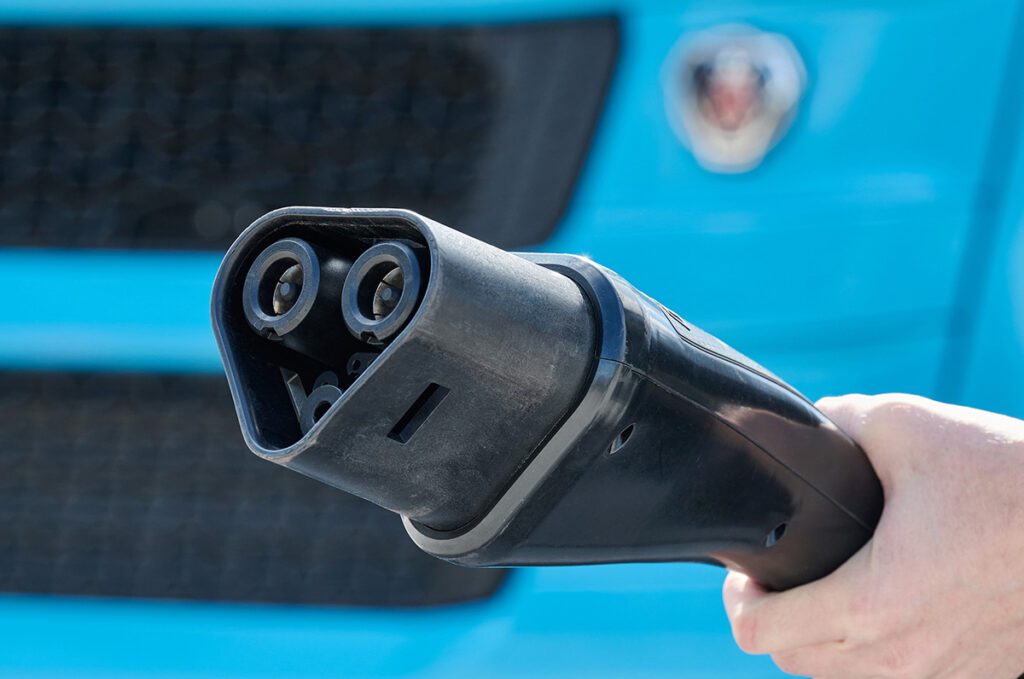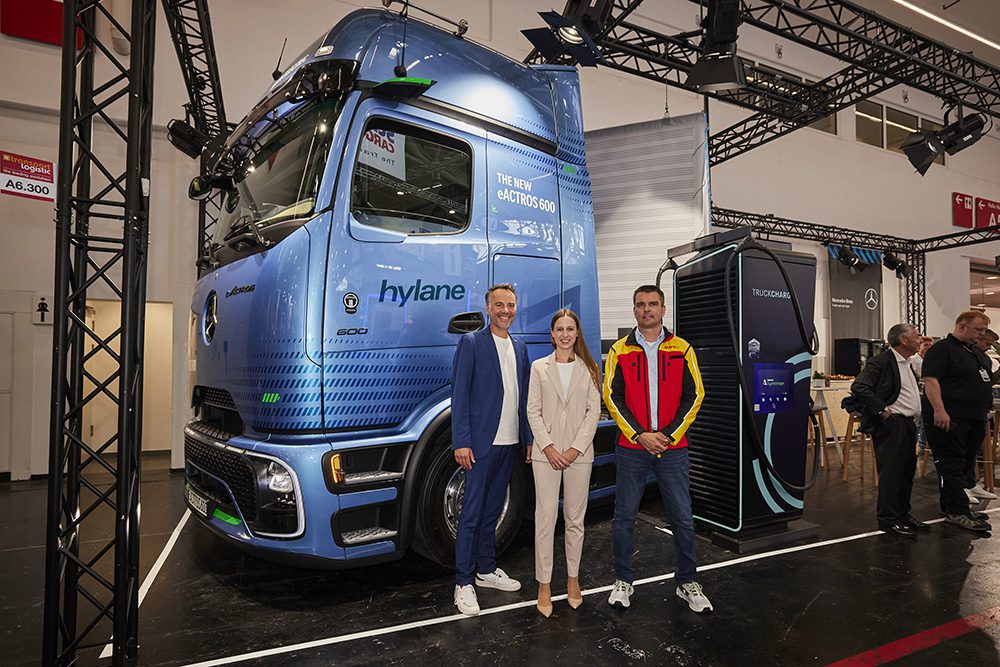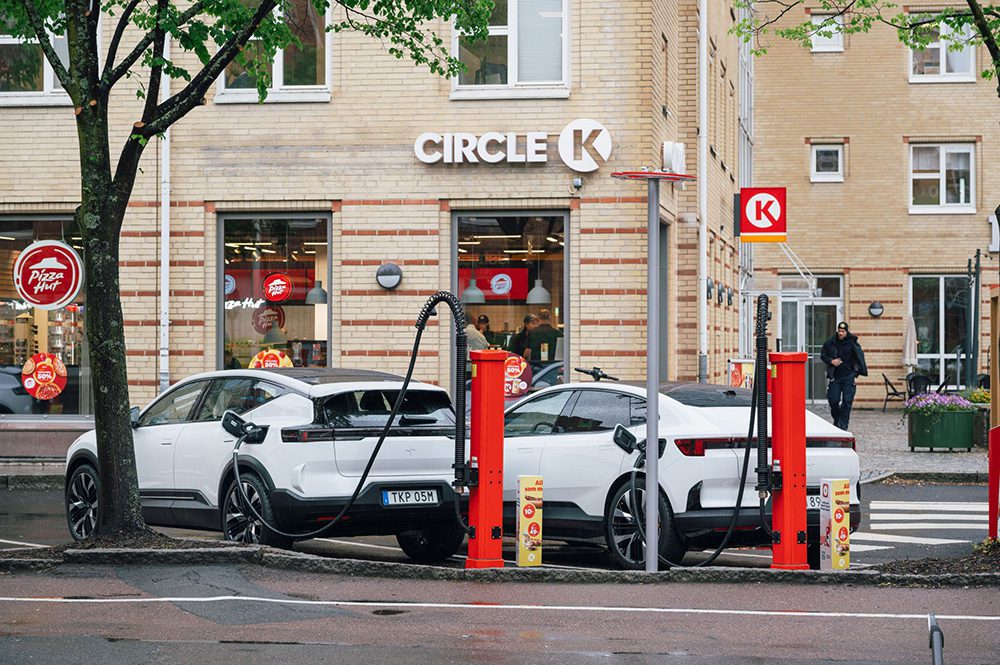Since EV charging company EVBox was founded in the Netherlands in 2010, it has grown to see its charging stations in over 30 countries around the world, powering nearly 1,000 cities. “On a global level, we have more than 50,000 connected smart charging stations. We have the largest installed base worldwide,” EVBox CEO Kristof Vereenooghe told Charged.
The company is continuing to expand its electric charging empire, and the US is next on its list. EVBox has been in the US since 2017, selling a commercial EV charger called the BusinessLine, and has recently announced a new charger tailored specifically for the American market.
The new Level 2 charger was designed based on EVBox research in California, the hotspot of EV technology in the States. Speaking with EV drivers, charger installers, facility managers, and other EV stakeholders, EVBox thinks it has nailed down a few key differences between Americans and Europeans when it comes to EVs.
“This Level 2 charger is a new product that we have developed, but it takes into account the needs of the American market in mind,” says Vereenooghe.
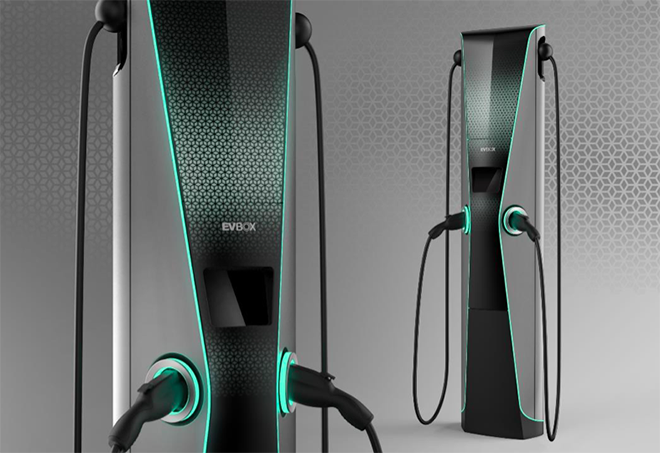
Chargers from Amsterdam
“I always say we had the unfair advantage that we started EVBox in the Netherlands, which is still one of the most developed EV and EV charging countries,” says Vereenooghe.
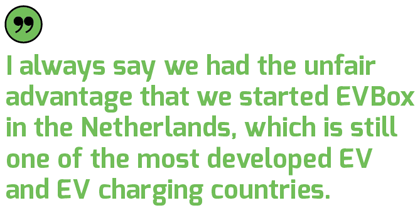
The Netherlands is ahead of the curve when it comes to EV charging because of a decision made by the Dutch government at the turn of the decade. Recognizing the chicken-and-egg problem – no EV infrastructure means no EV drivers, and vice versa – the government decided to support the building of public EV infrastructure. It began this project by testing four different charger vendors – EVBox among them – with the stipulation that these manufacturers work with open standards from day one.
“And so from the early days, in 2010-2011, the government, together with EVBox and relevant partners, had already put charging infrastructure in place in cities like Amsterdam, Rotterdam, and others,” Vereenooghe explains. “And they measured the heartbeat of the stations every fifteen minutes, on uptime, on total cost of ownership, etc. After a couple of years they figured out that we were very happily over-performing compared to the other vendors. More than twice as good as the number two.”

The two sides of the pond
With its advantageous origin on the far side of the Atlantic, EVBox has a good handle on what Europeans expect in their EV chargers. But what about Americans?
Let’s start with the technical differences. “In the US it’s one phase or split phase, and in Europe it’s either one or three phase,” explains Vereenooghe. “So we go from 3 to 7 to 11 to 22 kilowatts in Europe. In the US most vehicles charge at 7.4 kW or less.”
From there, the differences begin to take on a more cultural tone. In the US, bigger is typically better, and EV chargers are no exception. “In Europe people like to have smaller types of products, traditionally they prefer a smaller physical design that blends with the environment,” says Vereenooghe. “In the US we find that customers desire robust chargers that stand out and give visibility to the location.”

“In America there’s more space in general, and people are used to it,” he says. “American drivers enjoy driving big pickups, trucks, SUVs – in general you see more big vehicles on US roads than in Europe. And this perception of bigger size also influences design and the perception of how a charging station should look.”
The biggest difference between American and European EV drivers has to do with the reasons people choose to drive EVs in the first place. In the US, EVBox believes the primary motivation that will trigger massive adoption will be cost. In Europe, it will be concern for the environment. This difference manifests itself in the different models of EV charging between the two continents.
These days in the US, EV charging is seen more as a business opportunity. Tesla continues to aggressively install its proprietary chargers as a competitive advantage, charging networks are expanding their reach with various automotive partnerships, utility companies are getting into the game for obvious reasons, and commercial property owners are installing EVSE in their parking lots for employees and customers.
“In contrast, countries like The Netherlands have extensive public charging infrastructure available,” Vereenooghe explains. “If you walk the streets of Amsterdam and some other cities in Europe, in every street you’re going to find charging infrastructure where people who are parking in the street can actually charge their car,” says Vereenooghe. “That’s something that does not exist as much in the US. In the US, people don’t park their cars that much on the street, so you’re not going to find charging stations on the street, it’s more about home charging, workplace, and retail charging.”

Smart charging before it was cool
One explanation for these differences is a market segment that’s quite popular in Europe: leased company cars. “Most of the people that drove EVs at the beginning, they were driving company lease cars,” explains Vereenooghe. “In Europe, people very often get a little bit less salary, but they get a company car.”
For this reason, EV chargers in Europe had to be smart from the very beginning.
“Because we use smart charging infrastructure, we know exactly how much energy you consumed to charge your specific car. Our software platform will automatically pay the private individual at the end of the month for his home consumption to charge his company car. Then we bill the employer or leasing company not only for that consumption at home, but also for all the other charging sessions that he did across Europe. At a supermarket, at a restaurant, I mean wherever. It’s all combined into one bill,” says Vereenooghe.
“So the whole infrastructure is in place, and it’s fully automated through a cloud software platform,” he continues. “And we’ve done it already for six years. Same with smart charging. I mean today, smart charging is becoming a hot topic here in the US, but let me tell you, we did it before the definition of smart charging existed. I mean since 2010, 2011, we’ve already taken care of load balancing and peak shaving and all those kinds of things. So it’s already embedded in our systems and in the software platforms for many years.”
The new Level 2
EVBox’s new Level 2 charger builds on the company’s considerable EV experience, but is optimized for use in the US. The new charger’s modular design is made for easy installation and scalability, allowing facility managers to add and upgrade as they see fit. The charger is also highly customizable, so businesses can personalize it with their own branding. Each charger can charge two vehicles at once at 7.4 kW; by installing two chargers back-to-back, as Vereenooghe notes is often done, you can double the capacity of a station to four cars. And the rugged design of the new charger is sure to appeal to American tastes.
Though the new charger was announced this January at CES, it won’t be commercially available until early next year. According to Vereenooghe, the company is working on scalable production of the charger, which is still in the midst of the certification process. In the meantime, Americans can purchase the EVBox BusinessLine charger.
“Our BusinessLine is a product that EVBox is well known for, and we manufacture that in our assembly facility in the US as well,” says Vereenooghe. “And in the future, we will continue to do that for products for the US market – made by Americans for Americans.”’

For home charging, EVBox’s recently launched Elvi – a CES Innovation Award Honoree – which will be available within the first half of this year.
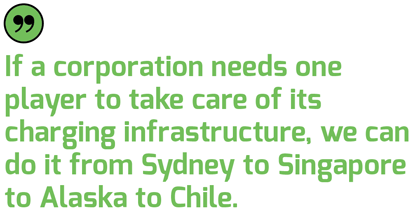
A true international player
EVBox’s interest in expanding its American presence is subsumed by its interest in bringing its formidable EV chargers to the global market. According to Vereenooghe, the company has been very successful in this regard.
“If a corporation needs one player to take care of its charging infrastructure, we can do it from Sydney to Singapore to Alaska to Chile, wherever in the world they need it,” he says. “The engineering and R&D development is centralized in Amsterdam, which the industry calls the ‘eMobility Valley’ of the world. Only our manufacturing is done on the continent where we sell and service the product. So our European products are manufactured in the Netherlands, and the ones for the US are manufactured in the US. We think it’s very important to act as a local company in each country where we have presence. We’re a true international player.”
This article originally appeared in Charged Issue 35 – January/February 2018 – Subscribe now.







































































































